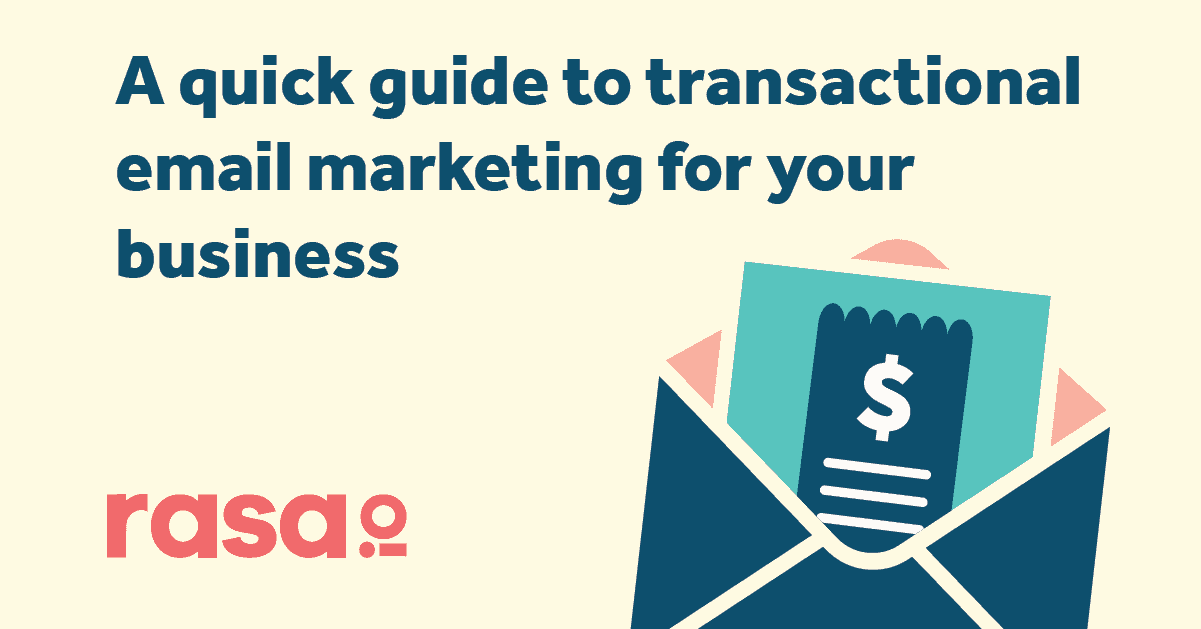Not all marketing emails serve the same purpose. Some are designed to pitch an offer or product (more on promotional emails here). Others are more utilitarian, serving as a conduit for customer service. In the marketing world, that latter category is called a “transactional email.”
Transactional emails are sent in response to an action a customer has taken with your brand, whether that be buying a product or service or creating a new account on your website. Effective transactional emails also seize the opportunity to show customers the tone, voice and values of the brand.
Here is a quick guide on transactional emails and how to use them to reinforce your company’s email marketing strategy.
When should my business send a transactional email?
Transactional emails are sent in response to an action taken by the customer. For many businesses, transactional emails are automated responses.
Examples of transactional emails include:
- Order confirmations and receipts
- Shipping notifications
- Password reminders
- New account notifications
Think of transactional emails as the worker bee of the marketing email world. Purchase a gift card from a local spa online? You promptly receive an email order confirmation and receipt. Book an appointment through your dentist’s website? An email confirming the appointment day and time lands in your inbox.
Why should my business send a transactional email?
Transactional emails drive customer service in the digital world. They welcome new customers, let customers know that their purchase or request is being acted upon, and form a direct link for customers to communicate questions or problems. They’re also pretty effective at engaging people. Email users click on links and images included in transactional emails at a rate roughly three times higher than other types of marketing emails, according to data gathered by IBM’s Watson Marketing platform.
Today, most people expect to receive order confirmations and regular shipping updates via email. If your business is not doing this, start now. Transactional emails are key to keeping customers happy and informed, removing confusion from the sales process, and laying the groundwork for a long-term customer relationship.
How should my business use transactional emails?
Transactional emails are often boring and automated, which means they’re often overlooked in email marketing efforts. But these types of emails offer a prime opportunity to connect with a customer. Think about it. A fair share of transactional emails are order confirmations, meaning a customer has just purchased something from you and is probably feeling pretty good about it. What better time to start a conversation about your brand?
Here are tips for strengthening your transaction email strategy.
- Ditch the generic email. Generic transactional emails get the job done, but they’re boring. Every transactional email — from receipts to shipping updates — should clearly convey your brand’s voice, aesthetic and values. Let your customers know there are people behind the email that just landed in their inbox. Spend time crafting the language and imagery included in automated responses, and update them regularly. For example, an automated order confirmation can include a friendly, heartfelt thank you message from your team. It’s a simple touch, but goes a long way in building a long-term customer relationship.
- Weave in extra content. Transactional emails don’t have to only be about the transaction. Use it as a spot to introduce your customer to useful or entertaining content. For example, a bank can include three tips to get started on saving money and a link to a savings-related blog post in its new account creation emails. A cosmetics retailer can spice up order confirmation emails with a fun, celebratory GIF and a link to its makeup tutorial series on YouTube. The idea is to strike a balance between giving the customer the information they need and providing them with quick entertainment or useful content.
- Increase points of contact. Because transactional emails are so effective at driving engagement among customers, look for ways to incorporate them elsewhere in your sales cycle. Often overlooked types of transactional emails to utilize include cart abandonment emails, customer feedback emails and product update emails (the last one is especially useful for explaining any software changes that could affect customer experience).
Remember, transactional emails are just one type of marketing email in your toolkit.













